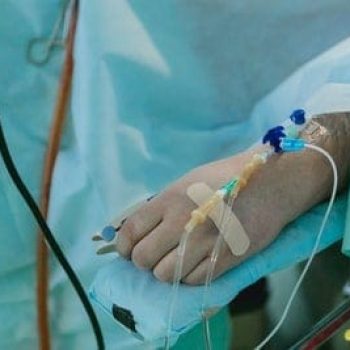

SonderCare Learning Center
Patient safety goals for home care are perhaps more important than in an institutional setting because there’s less oversight. Patient safety in the home works to prevent adverse outcomes like infections and falls but it is much more than that. In simple terms, concentrating on the wellbeing of homecare patients and striving to improve the standard of treatment helps to avoid negative effects such as falls and infections.
Falls can be stressful on their own and, particularly in vulnerable elderly people, they can cause more severe health problems. Even worse, being exposed to new germs brought into the home or consuming spoiled or infected food can be devastating in a homecare scenario.
Thanks to a variety of factors, a home healthcare setting is a demanding environment for caregivers in terms of patient protection. Many issues such as household hazards (poor indoor air quality, lead paint, toxic substances) that are unknown to the care team can produce various negative medical effects in private homes.
Also, many of the same health care risks in hospitals are often present in home care environments, such as the spread of infections, the growth of pathogens, drug errors, and many others. Not to mention, health care providers may have insufficient patient safety training or expertise and also have almost no direct oversight which creates problems. Finally, risk mitigation in-home care is particularly troublesome because requisite safeguards in the medical workplace may not be in effect or accessible for private caregivers or family members.
No one should have to confront the concept of blame when it comes to a loved one’s recovery. However, in the official discussion of patient safety procedures that discussion often comes up. Patient safety shifts the focus from looking at what happened in a health care situation that could have been executed better to creating a procedure that prevents similar incidents in the future. According to WHO training on the topic, focusing on blaming or punishing professionals for errors is counter-productive. The same has to apply to caregivers and family members involved in direct hospital style care at home.
Assigning the blame to one person leads to a danger of systemic issues going unnoticed. Good patient safety science makes no such assumptions but, instead, investigates the matter more thoroughly. This is especially true in caring for a family member. Trying to do things like wound care or bathroom visits in a homecare scenario for the first time is very challenging and emotional for someone with limited experience. Don’t give up! Learn more about what’s needed, perfect your approach and take a scientific approach to home healthcare.
Care providers should use at least two forms of identification for patients. These may include names, date of birth, and address.
It’s a good habit to use the full names of the patient. When a caregiver has medication for several people with them, it’s easy to mix up initials. Using full names prevents mix-ups with treatments and medicines.
Home caregivers should keep a record of all information regarding the patient’s medication. The form should include:
Caregivers should also provide the patient with an up-to-date list of any medicines they should take. The plan should include dosages and instructions on how to take medication. The patient should take the list to their doctor whenever they go for an appointment.
Home caregivers must be mindful of germs coming into the home. Washing their hands according to CDC guidelines minimizes the risk of infection.
Spot checks around the home to ensure that living conditions are sanitary are also advisable. At the least, caregivers should frequently wipe down the surfaces with which the patient most often comes into contact.
In instances where it’s clear that the patient can no longer keep up with housecleaning, caregivers should broach the topic with the patient tactfully. They may suggest hiring a cleaner to assist or speaking to family members.
In extreme cases, it may become necessary to call in Adult Protective Services if the patient’s living environment is not conducive to healthy living.
Professionals should check the food in the home to ensure that it hasn’t spoiled. Patients with cognitive difficulties may find it challenging to make the correct decisions about food safety. As a result, they could get extremely ill with food poisoning.
Whenever and wherever there’s a distinct pattern, nurses should diplomatically raise the issue with the patient. Where that’s unsuccessful, it may be necessary to call in family members or Adult Protective Services.
Care providers should identify potential tripping hazards and suggest solutions. The use of safety grips, a proper hospital bed (such as the ones from SonderCare), and clearing of clutter are places to start.
Nurses may also check for low lighting, uneven flooring, loose rugs, and potentially slippery surfaces. Patients that bathe or shower unaided may be at particular risk of falling. Shower grips, stools, non-slip adhesive pads, and safety bars can prove useful here.
Caregivers should also assist the patient when ambulatory and help them with exercises to strengthen skeletal muscles.
An ongoing assessment of tripping risks is advisable. Professionals may conduct a risk evaluation on the first visit and then follow through with checkups every three to six months. Creating and using a simple checklist makes this process far easier and provides a standardized level of care.
Some frequent safety risks include highly flammable oxygen tanks and medication that makes the patient dizzy. Identifying such risks allows professionals to warn the patient and their families about the potential for danger.
A nurse may, for example, warn patients of the combustible effects of oxygen. It’s advisable to place a “No Smoking” sign on the patient’s door as a further precaution.
This study from the Journal of Patient Safety provides a more comprehensive list of potential home hazards.
Patient safety goals are an essential part of the overall homecare program. Professional care providers must ensure that they maintain strict standards in this regard. Using the best practices outlined above and creating checklists will help set a standardized level of high care.
The benefits to the patient’s quality of life are significant since caregiving allows them to live in a clean, safe home. Caregivers benefit from the satisfaction of a job well done–and a reduction in setbacks or negative complications in patients.
It is important because it uses crucial and advanced safety techniques such as monitoring technology, ensures patients understand their treatment plans while checking and verifying all medical procedures. Finally, it promotes following proper sanitization procedures and promotes a team accountability and cooperation environment.
Five types of variables have developed that may influence patient safety engagement: patient-related (e.g. demographic characteristics of patients), disease-related (e.g. disease severity), health care professionals-related (e.g. expertise and attitudes of health care professionals), health care setting-related and quality of evaluations.
Start Your Patient Safety Equipment Collection With SonderCare
Are you recently discharged from hospital, experiencing mobility issues, or in need of palliative or senior care? Enjoy a smoother recovery and get the luxury you deserve by choosing our home hospital products. Contact us today to discuss home hospital beds, mattresses, stand assist chairs and other accessories to make your home hospice perfect for a truly comfortable experience.
Are you looking for the most recent articles on patient safety and medical supplies? Browse our latest resources below and let us know if you have any questions. We’re here to support you as you embark on your road to home medical care.
Seeking The Best Care For Your Loved One?
Browse North America's Luxury
Patient Safety Equipment
Inventory